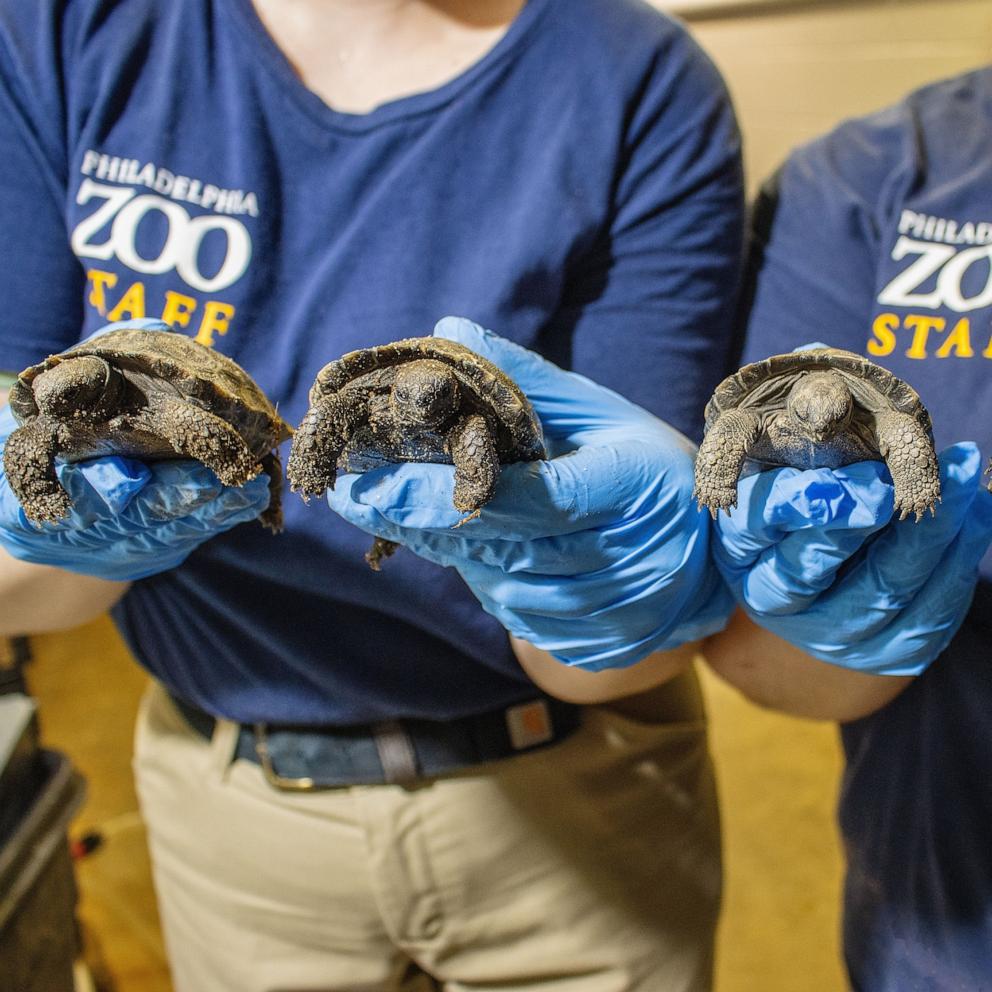7-year-old girl's death at Florida beach puts spotlight on sand safety: What parents should know
The tragic death of a 7-year-old girl has put a spotlight on beach safety, specifically when it comes to playing in the sand.
The girl, identified by police as 7-year-old Sloan Mattingly, was digging a hole in the sand with her 9-year-old brother at Lauderdale-by-the-Sea, Florida, in February, when both siblings became trapped, according to the Broward County Sheriff's Office.
First responders were able to pull both children out of the hole and both were transported to a local hospital, according to Sandra King, a spokesperson for Pompano Beach Fire Rescue, which responded to the scene.
"When we responded to the incident, it was quite chaotic," King told "Good Morning America." "The boy was buried chest-deep in sand and the little girl was buried fully underneath him."

King said Sloan was not breathing when she was pulled out of the hole, and was pronounced deceased later in the day at a local hospital.
The brother, identified by police as Maddox Mattingly, survived.
The two Indiana-based siblings were vacationing in Florida with their parents, who were at the beach with them, according to a preliminary investigation led by the Broward County Sheriff's Office
King said the beach where the family was spending their day, Lauderdale-by-the-Sea, does not have lifeguards.
"There are so many dangers that can happen on a beach other than drowning," she said. "People go to the beach to enjoy themselves, and before you know it, there's a tragedy that was just unfathomable before they got to the beach."
Expert tips for beach and sand safety
Sloan's death is just one of dozens of sand-related deaths that have happened over the years in states from California to Florida, New Jersey, Massachusetts and Rhode Island.
King noted that Sloan's death is also the second sand-related death that has occurred in the Pompano Beach area in recent years.
In New Jersey, an 18-year-old male died in 2022 after becoming trapped while digging a hole on the beach with his sister.
"People underestimate the dangers and the weight of the sand and how it can just suddenly collapse," King said. "You wouldn't think that it's dangerous, but it can be."
Wyatt Werneth, national spokesperson for the American Lifeguard Association, told "GMA" that people are not warned enough about the dangers related to playing in the sand at the beach.
"We hear a lot about rip currents and lightning and things like that, but this is nonetheless dangerous and should be included in the warning systems," said Werneth, a lifeguard in Cocoa Beach, Florida. "Sand on the beaches, unlike some hill areas or inland areas, it moves very easily. When you start digging a hole, it'll fill itself up very quickly."
Werneth said beachgoers can still enjoy days of building sand castles and playing in the sand, but said they should do so with caution.
First, Werneth said people should never dig holes past knee-level, and should not climb into holes at the beach.
"When you start digging anything beyond your your knees or your waist and then getting in it, that is dangerous, he said. "So we advise 100% against that."
Second, Werneth recommends that beachgoers "know before they go," meaning that they should be aware of potential beach dangers, like riptides and sand holes, and should always set up by a lifeguard stand.
"Lifeguards are stewards of the beach," he said. "If you go to a beach and you start digging a hole and there's a lifeguard around, they're going to warn you and make sure you're safe."
Similarly, King said her No. 1 safety tip for all beachgoers is to always be by a lifeguard stand.
"No matter what your emergency, number one, they can respond to you within seconds, and number two, they can call immediately for backup," King said. "And also, one of the most important things that lifeguards to is public education, so if they see someone in a potentially dangerous situation, they'll come talk to them. They'll let them know that this is too big, too deep [of a hole], and that kids shouldn't play in this."
Werneth noted that to keep people safe, it's also important that if you dig any kind of hole in sand, that you then fill the hole before leaving the beach.
"The most important thing is to cover it back up, no matter how deep it is, even if it's only bucket-deep" he said. "Someone could step in it and twist an ankle, and in Florida, it's also dangerous to our marine life."
Editor's note: This story was originally published on Feb. 21, 2024.







